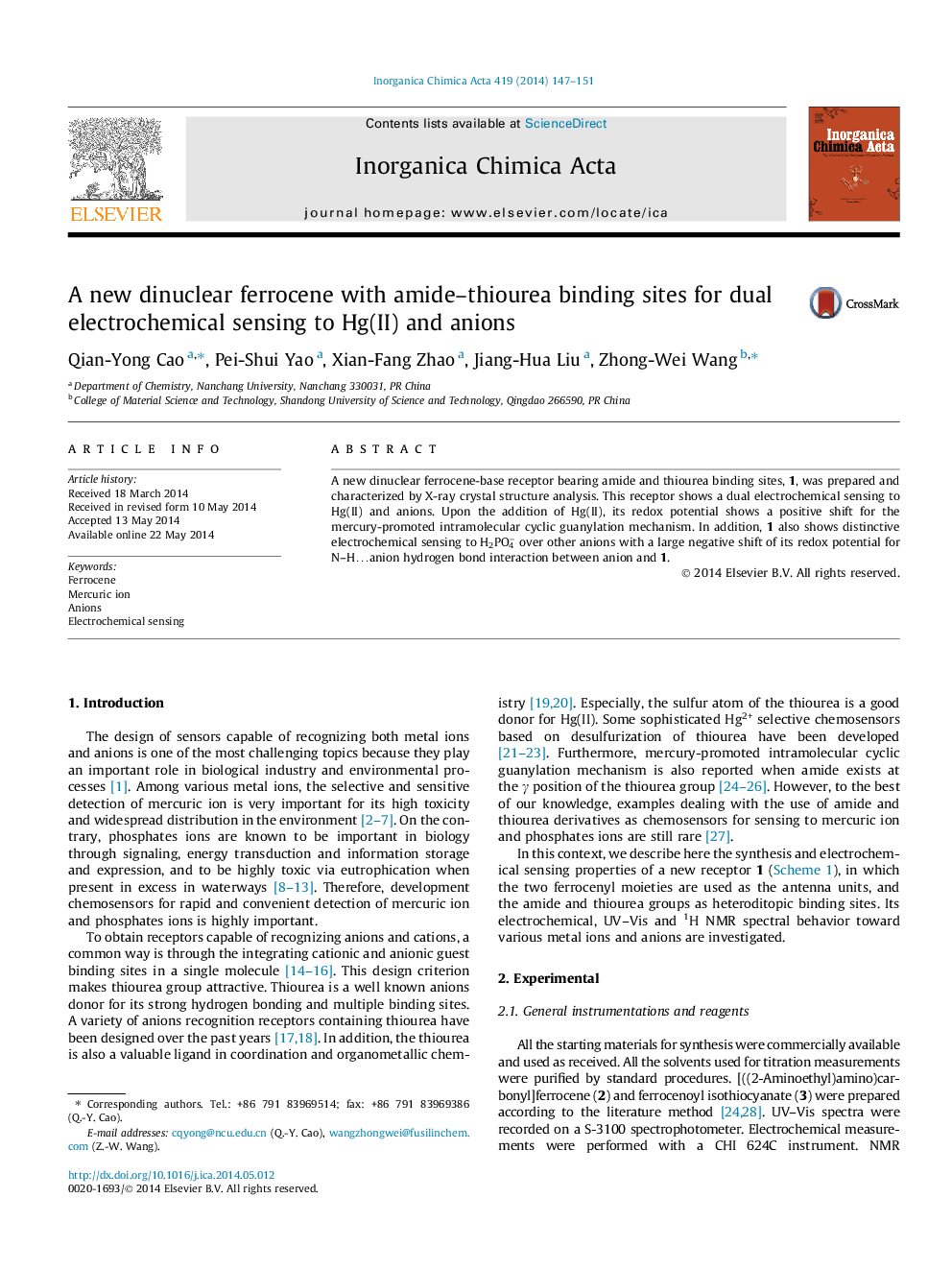| Article ID | Journal | Published Year | Pages | File Type |
|---|---|---|---|---|
| 1309617 | Inorganica Chimica Acta | 2014 | 5 Pages |
•A new dinuclear ferrocene-base receptor was synthesized.•It shows distinctive electrochemical sensing to Hg(II).•It shows electrochemical sensing to H2PO4− over other anions.•The binding mechanism was investigated by ESI-MS and 1H NMR spectrum.
A new dinuclear ferrocene-base receptor bearing amide and thiourea binding sites, 1, was prepared and characterized by X-ray crystal structure analysis. This receptor shows a dual electrochemical sensing to Hg(II) and anions. Upon the addition of Hg(II), its redox potential shows a positive shift for the mercury-promoted intramolecular cyclic guanylation mechanism. In addition, 1 also shows distinctive electrochemical sensing to H2PO4− over other anions with a large negative shift of its redox potential for N–H…anion hydrogen bond interaction between anion and 1.
Graphical abstractA new dinuclear ferrocene-base receptor bearing amide and thiourea binding sites, 1, was synthesized. 1 shows distinctive electrochemical sensing to Hg(II) with a positive shift its redox potential. 1 also shows electrochemical sensing to H2PO4− over other anions with a large negative shift its redox potential.Figure optionsDownload full-size imageDownload as PowerPoint slide
